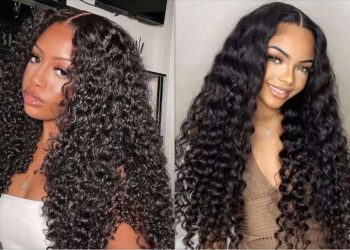Wigs have become an essential accessory for many, offering versatility in style and convenience. Whether you’re looking to switch up your look, deal with hair loss, or simply want to add some flair to your daily routine, choosing the right wig can be a game-changer. However, buying a wig isn’t as simple as picking one off the shelf. There are several important factors to consider to ensure you make the best purchase for your needs.
1. Understand the Different Types of Wigs
The first step in your wig-buying journey is to understand the different types available. Wigs can be broadly categorized into synthetic and human hair wigs. Synthetic wigs are made from man-made fibers that mimic the look and feel of natural hair. They are often more affordable and require less maintenance than human hair wigs. However, they may not last as long and can be less versatile when it comes to styling. On the other hand, human hair wigs are made from real human hair, offering a more natural appearance and greater styling options.
2. Determine Your Wig Cap Size
One of the most overlooked aspects of buying a wig is getting the correct cap size. Wigs come in different sizes—petite, average, and large—to accommodate various head shapes and sizes. To find the right fit, you’ll need to measure your head. Use a soft measuring tape to measure around your head, starting at your hairline at the forehead, then running behind your ears and around the nape of your neck. An ill-fitting wig can be uncomfortable, slip off, or look unnatural. It’s important to remember that while adjustable straps exist, they can only do so much to correct a size that’s too big or too small.
3. Consider the Wig’s Construction
The construction of the wig cap plays a significant role in comfort and appearance. There are several types of wig cap constructions, including lace front, monofilament, and full lace. A lace front wig has a lace base only at the front of the wig, which allows for a natural-looking hairline and the ability to style the hair away from the face. Monofilament wigs have a cap that gives the appearance of natural hair growth at the parting, making them ideal for people who want a realistic look.
4. Choose the Right Wig Color and Texture
When selecting a wig, color, and texture are critical factors that affect how natural the wig will look on you. It’s tempting to go for a bold new color, but choosing a shade that complements your skin tone is key to achieving a natural appearance. Additionally, consider your natural hair texture when choosing a wig. If you naturally have curly hair, a wig with a similar curl pattern will look more authentic. Likewise, if your hair is straight, a straight wig will blend more seamlessly with your natural hairline and sideburns. High-quality wig retailers like Keswigs offer a variety of colors and textures, making it easier to find the perfect match for your natural look. Taking the time to find the right color and texture will ensure your wig looks as natural and flattering as possible.
5. Learn How to Properly Care for Your Wig
Proper care is essential to extending the life of your wig and keeping it looking fresh. Both synthetic and human hair wigs require specific care routines. For synthetic wigs, it’s important to use products designed specifically for synthetic fibers, as regular hair products can damage them. Avoid heat styling unless the wig is labeled as heat-resistant. Human hair wigs, while more durable, need regular washing, conditioning, and styling, just like your natural hair. Use sulfate-free shampoos and conditioners to keep the hair soft and manageable. Store your wig on a wig stand when not in use to maintain its shape and prevent tangling.
6. Set a Budget Before Shopping
Wigs can vary greatly in price, depending on the type, quality, and brand. Setting a budget before you start shopping will help narrow down your options and prevent overspending. While it might be tempting to go for the cheapest option, remember that you often get what you pay for. Higher-priced wigs, especially those made from human hair, tend to offer better quality, longevity, and styling versatility. On the other hand, if you’re looking for something temporary or for occasional use, a well-made synthetic wig might suffice.
7. Try Before You Buy
Finally, it’s essential to try on wigs before making a purchase whenever possible. Many people make the mistake of buying a wig online without trying it on first, only to find that it doesn’t look or feel as expected. If you can, visit a wig shop where you can try on different styles, colors, and constructions to see what suits you best. This also gives you the opportunity to assess the comfort of the wig and ensure it fits properly.

Buying a wig is a personal and sometimes significant investment that requires careful consideration. By understanding the different types of wigs, ensuring the right fit, and taking proper care of your wig, you can make a purchase that not only meets your needs but also enhances your overall look. Whether you’re new to wigs or looking to expand your collection, following these tips will help you shop with confidence and find the perfect wig that suits your style and lifestyle.







